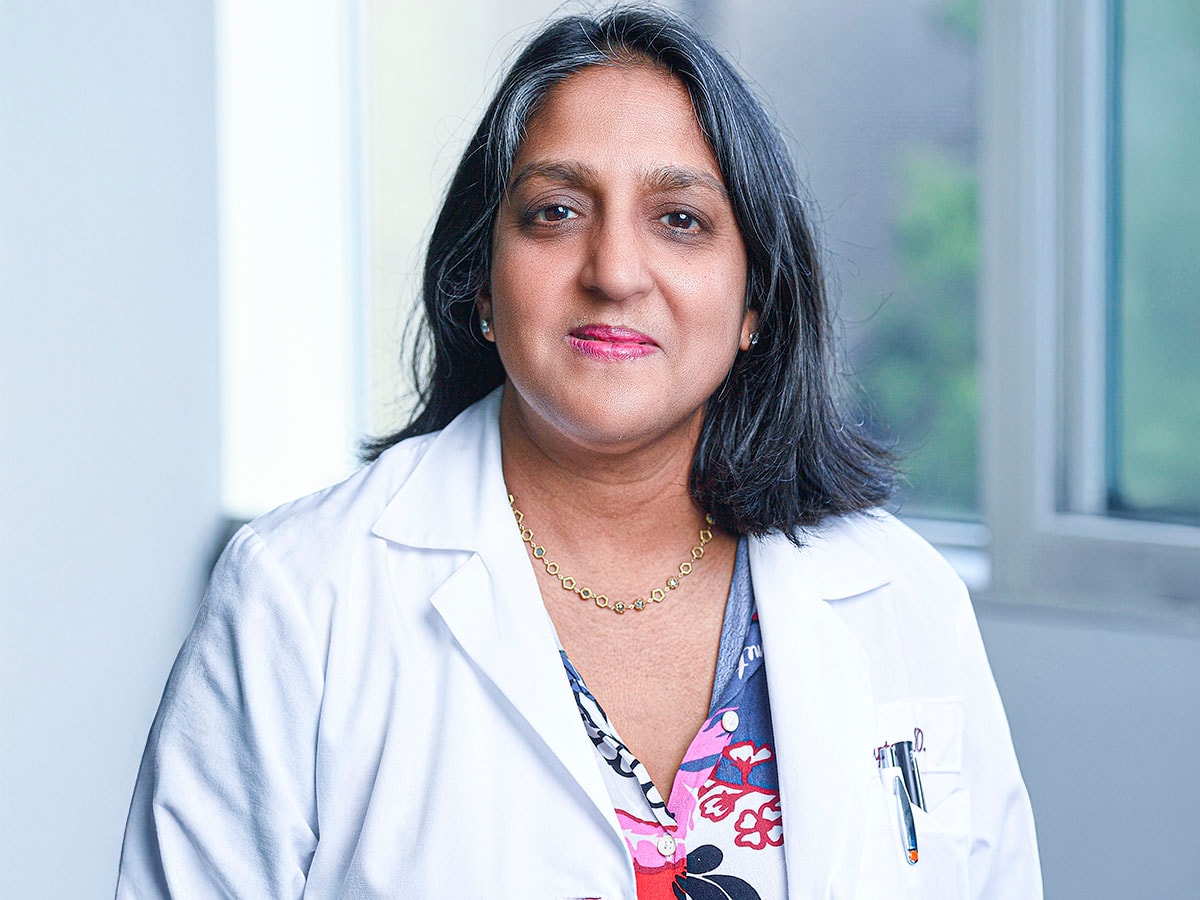 Dr Amita Gupta, director of the Division of Infectious Diseases at the Johns Hopkins School of Medicine, US
Dr Amita Gupta, director of the Division of Infectious Diseases at the Johns Hopkins School of Medicine, US
Over 10 million people suffered from tuberculosis (TB) in 2023, with India accounting for about 26 percent of the total TB cases in the world, says the World Health Organization. Dr Amita Gupta, director of the Division of Infectious Diseases at the Johns Hopkins School of Medicine in the US, has a strategy to fight TB in India, starting from schools. In this effort, she has co-founded the Gupta-Klinsky India Institute at Johns Hopkins.
Born in the US, Gupta has been associated with the university for about two decades, where she specialises in research on infectious diseases. In 2020, she co-founded the institute to foster collaboration between TB researchers at Johns Hopkins and Indian medical research institutes.
“We have all these amazing collaborations going on. Couldn’t we make this stronger if we made it more of a unified superhighway of collaboration, communication, and convening and strengthen our partnerships for more impact instead of just working in our own little silo?” says Gupta, sharing the idea behind starting the Gupta-Klinsky India Institute.
The institute has been working with the Indian government to launch a programme, TB Free Schools Initiative, where they plan to test children in the school for TB. In an interview with Forbes India, Dr Gupta shared the details of the TB Free Schools Initiative. Edited excerpts:
Q. Could you provide an overview of the TB Free Schools Initiative by the Gupta-Klinsky India Institute?
The idea of the TB Free Schools Initiative is to do an education campaign because, first, we have to educate children, parents, teachers, schools, and administrators about how we diagnose it, how we prevent it, and then we’re going to do a screening strategy. We will look for children with symptoms and check if they have TB. We’re going to use AI-generated chest X-rays that you can put up in the school gymnasium.
We’re also going to do preventive therapy. So you can do a skin test, and we have some engineers trying to see if they can do an innovation around automatically reading the result. And then, we can treat it with generic drugs that are available here in India, which is a simple treatment.
The idea is to really scale up a simple screening strategy for children by going to schools and doing a camp and screening them for active disease or latent infection.
Q. Could you shed some light on your collaborations with the government of India, state governments, and medical research institutes?
We’re very aligned with the TB-Mukt vision of the Indian government. Urvashi Singh, the deputy director of the central TB division of the government, is one of our advisors. We’re also working with the ICMR (Indian Council of Medical Research) and have NGO partners. We’re working in Maharashtra, Tamil Nadu, and UP. Our work has been based on successive work we’ve done in Dharamshala.
With regard to the collaborations with medical research institutes in India, the idea is to learn from each other. We’ve set up a consortia, which are multi-institutional studies where we work together; one of them is the Report India Consortium. We have six US universities and nine Indian clinical institutes for this. We are collaborating with BJMC Pune, Hinduja Hospital Mumbai, JIPMER Puducherry, National Institute of Research in TB, PGI Chandigarh, BMMRC Hyderabad, and a couple more institutes. India’s department of biotechnology funds the Indian side, and the US National Institutes of Health funds the American side.
Also read: What makes an effective leader in healthcare?
Q. What kind of challenges are you expecting in screening students for TB in schools, and how do you plan to address those?
We need a lot of community engagement. Whenever you’re doing a school-based programme, you have to explain what the value is and why you are doing the screening. Is it safe to do? Is there any discomfort? Is there any exposure to radiation and things like that? All of those things take a lot of means to explain.
So, along with working with the central TB division and the state TB division, we are working with the city TB offices. We have to go to the school superintendents and talk to parents. What we’re doing takes a lot of community and stakeholder engagement with many different people, and we must gain trust. So it’s very much a partnership.
Q. How are you planning to make it cost-effective? What would be the cost of these tests?
We’ve done some modelling to look at its cost-effectiveness. We have partnered up with the Serum Institute of India, which makes the Cy TB test kit. This skin test costs about $2. Further, we have partnered with Cure AI, the company that makes AI software for chest x-rays. Also, we are developing a mobile app where you can get the information if you have a positive skin test. We have to actually do the study to see how cost-effective it is in real life. What we’re doing right now is pricing the whole package for just $21.
Q. When is the programme going to be implemented on the ground?
We’ve developed the protocol, and we have fundraised for it. We have both public and private partners. We have to get the necessary permissions from the government. So, probably by May or June next year, once all the permissions are in place, we plan to screen about 10,000 children in the first year in both rural and urban areas.
